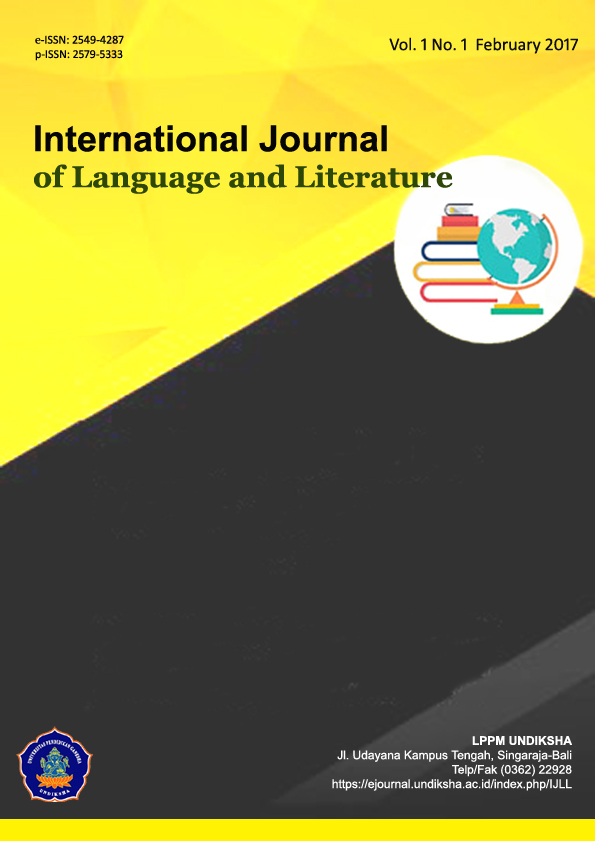POWTOON FOR THIRD GRADERS: AN IMPLEMENTATION
DOI:
https://doi.org/10.23887/ijll.v3i4.28417Keywords:
ICT, PowToon, teaching media, young learnersAbstract
In the past, using a conventional media was basic ways to transfer information from the teacher to students. In the era of technology, it is needed to teach using digital media. Therefore, PowToon was implemented as teaching media and it aimed to know the students’ response as well. This research was focused on the implementation and evaluation of the developed PowToon. The data were collected through interview, observation and questionnaire. The result was, developed PowToon could be used to teach English for third-grade students. The media was categorized good based on the result of teacher interview. In relation with the rating of the media combined with the observation checklist, it was found that the implementation could help the teacher in teaching process. From the students’ questionnaire, it was found that the animation video could attract the students’ attention, and it also motivated the student during teaching and learning process.
References
Harmer, J. (2001). The Practice of English Language Teaching. Longman.
Harmer, J. (2007). The Practice of English Language Teaching. Pearson Longman.
Nurseto, T. (2012). Membuat Media Pembelajaran yang Menarik. Jurnal Ekonomi Dan Pendidikan, 8(1), 19–35. https://doi.org/10.21831/jep.v8i1.706
Puspitarini, Y. D., Akhyar, M., & Djono, D. (2016). Developing Powtoon-Based Video Learning Media for Five Grade Students of Elementary School. In 2nd International Conference of Communication Science Research (ICCSR 2018) (Vol. 165, pp. 173–177). https://doi.org/10.2991/iccsr-18.2018.37
Romiszowski, A. J. (1984). Designing Instructional Systems. Nichols Pub Co.
Sarkar, N., Ford, W., & Manzo, C. (2017). Engaging Digital Natives through Social Learning. Systemics, Cybernetics, and Informatics, 15(2), 178–182.
Semaan, C., & Ismail, N. (2018). The Effect of USing Powtoon on Learning English as a Foreign Language. International Journal of Current Research, 10(5), 69262–69265.
Downloads
Published
How to Cite
Issue
Section
License
IJLL Journal provides immediate open access to its content on the principle that making research freely available to the public to supports a greater global exchange of knowledge.

This work is licensed under a Creative Commons Attribution-ShareAlike 4.0 International License







